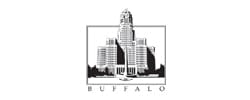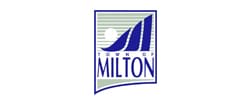Clinical Assessment

The Clinical Assessment is composed of the following: body composition, 60-second sit-up test, trunk flexibility, and maximal aerobic fitness.
-
“Hi Fern, I just wanted to thank you for your help in this process. You were very professional to deal with at the exam and today during the CPAT. Thanks for all the work that you put into it.”
5 Clinical Tests
- Pre-Appraisal Screening
- Body Composition
- Maximal Aerobic Fitness
- Trunk Flexibility
- 60-second Sit-up Test
The Clinical Assessment is composed of the following: body composition, 60-second sit-up test, trunk flexibility, and maximal aerobic fitness.
Candidates are expected to familiarize themselves with each component prior to their appointment. Candidates should understand the purpose of the test, violations and warnings, how the test is administered and evaluated.
Candidates are not permitted to observe another candidate perform during their test.
Candidates should be properly warmed up and stretched prior to any vigorous exercise.
All Clinical Assessment test protocols are conducted once. Second attempts are not permitted.
Candidate will receive a score for each component. The maximum accumulative score that a candidate can receive for the clinical assessment is 30 points. The candidate must attain a score of at least 18 points out of 30 on the clinical assessment as well as successfully complete all 5 components in order to receive a “Pass” grade.
Attire: Shorts, t-shirt, socks, and running shoes. You will be asked to remove all jewellery, including body piercings.
Should you have any questions regarding the Clinical Assessment, contact us to have your concerns addressed prior to your appointment.
- Pre-appraisal Screening
- Body Composition
- Maximal Aerobic Fitness
- Trunk Flexibility
- 60-Second Sit-Up Test

Pre-Appraisal Screening
The pre-appraisal screening procedures bring a measure of safety to our assessments. Candidates will receive in their confirmation email the following forms: PAR-Q+ and Assumption of Risk and Release of Liability Form. To ensure their safety, candidates are required to print and complete these forms prior to their appointment, and submit them to our staff upon registration.
The PAR-Q+ questionnaire is a straightforward and simple, but essential, first step in the pre-appraisal screening procedure. It is designed to identify those candidates for whom certain physical activities might be inappropriate. Candidates with only ‘No’ responses are cleared to participate in the assessments. Candidates with one or more ‘Yes’ responses in Section 1 and 2 must have their physician complete the Clearance form. Candidates will be permitted to proceed with the assessments once the Clearance form is completed and submitted to the staff upon registration.
The Assumption of Risk and Release of Liability Form describes the nature of the assessments that will be undertaken and outlines the candidate’s responsibilities.
Once these forms are completed and submitted, candidates will have their resting heart rate and blood pressure measured. For resting heart rate and blood pressure measurements, the candidate will sit for at least 5 minutes. The candidate’s resting heart rate and blood pressure is measured using an automated blood pressure cuff. Candidates will not be permitted to participate in the clinical assessment if their resting heart rate exceeds 100 beats per minute. Candidates will not be permitted to participate in the clinical assessment if their resting systolic blood pressure measurement is greater than 144 mm Hg and/or their resting diastolic blood pressure is greater than 94 mm Hg.
Once each component of the pre-appraisal screening is successfully completed, the candidate is cleared to participate in the assessments.

Weight-related problems can pose a significant burden on the Canadian workforce. In the past, emphasis was targeted on the weigh scale, which measures body weight rather than body fat. As we know today, the emphasis should be placed on the amount and distribution of body fat as opposed to body weight. To determine one’s body composition, the candidate will be evaluated for both waist-to-hip ratio and percent body fat. In order to obtain an accurate body fat reading, it is the responsibility of the candidate to follow the protocol listed below.
- Do not exercise within 12 hours of your appointment.
- Do not consume any alcohol within 48 hours of your appointment.
- Do not consume diuretic medications within 7 days of your appointment.
- Do not consume caffeine within 12 hours of your appointment.
- Empty bladder within 30 minutes of your appointment.
- No food or drink (other than water) within 4 hours of your appointment.
- Essentially, you must be normally hydrated for this assessment.

The candidate will perform a graded exercise test on a motor-driven treadmill. The workload will be increased every minute by increasing the speed and/or elevation of the treadmill until the candidate is exhausted or until other symptoms dictate that the test must be terminated. Additionally, the candidate may voluntarily terminate the test at any time because of fatigue or discomfort.
The candidate will be instructed to wear a full-face mask for the purpose of collecting gases throughout the test. The maximal aerobic fitness test is measured in ml/kg/min and is rated on a 10 point scale relative to the candidate’s gender and age. For best results, candidates should dress in a short sleeve shirt, shorts, running shoes and socks. The candidate is allowed one violation before the test is terminated.
Violations on this test include:
Holding onto the treadmill rails for extended periods (ie., 2 seconds).
Talking while exercising (candidates will be instructed to communicate through hand gestures).

Candidates will be required to stretch the major muscle groups and torso before performing this test. Candidates will remove their shoes and sit down with their legs fully extended and the soles of their feet placed flat against the trunk flexometer. The candidate will place one hand on top of the other and extend their arms forward as far as possible along the measuring scale.
The candidate will perform three trials. On the third trial, the candidate will hold the position for at least one second to determine maximum trunk flexion. Trunk flexibility will be measured in centimeters and rated on a 5 point scale relative to the candidate’s gender and age. The candidate is allowed one violation before the test is terminated.
Violations on this test include:
- Bending at the knees.
- Holding the knees down.

Candidates will lie in a supine position and rest their head on a mat. In order for the sit-up to be counted, candidate’s must maintain the proper position. For this test, the correct sit-up position is as follows:
- arms folded across the chest
- knees bent at a 90° angle
- elbows must touch the knees when coming up from the mat
- when returning to the mat, shoulder blades must touch the mat
The candidate will move up and down in a continuous manner while bending at their hips. Candidates will perform sit-ups at a maximal rate. This test will last 1 minute in duration. The 60-second sit-up test is rated on a 5 point scale relative to the candidate’s gender and age.
Violations on this test include
- Failure to touch the knees with elbows
- Failure to return to the starting position (shoulder blades on the mat)


































